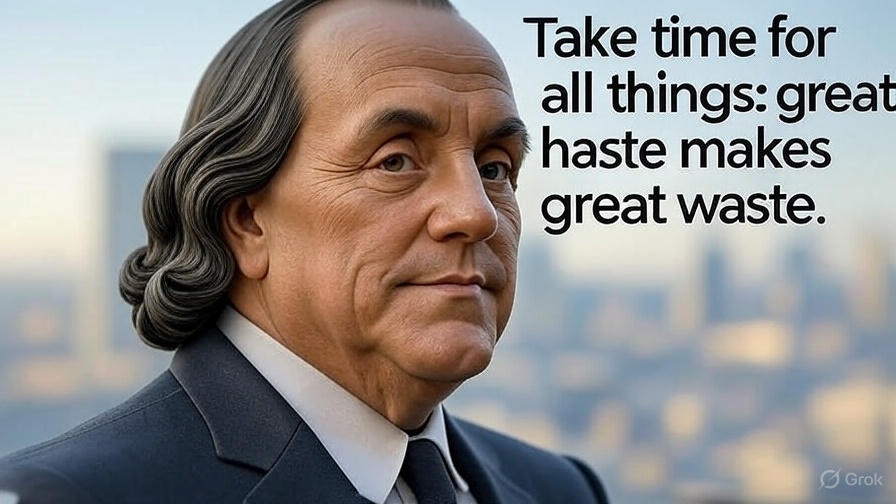By failing to prepare, you are preparing to fail. Benjamin Franklin’s timeless wisdom rang painfully true for John Schwartz’s father, who ran a thriving liquor distribution business. In an industry where demand rarely wavers, success seemed assured. John, a gifted salesman, fueled the company’s growth, assuming he’d one day take the reins. But his father, consumed by daily operations, neglected the long view. An ignored curve sent the business careening into bankruptcy, leaving John’s father, at 69, broken and defeated.

John, then 40, refused to repeat that mistake. With savings from his years in the family business, he pivoted to a new venture, purchasing a small company supplying molded plastic toy parts for $650,000. With just four employees and $3 million in annual sales, it was a modest start. But John’s vision and hustle transformed it. Within a decade, sales soared to $16 million, and John was living large—a waterfront home, a Porsche, a vacation house in Aspen, and a membership at Coral Ridge Country Club. Life was good, and he was banking $2 million a year.
When John approached our firm, he was contemplating an exit. “If I had $15 million, I’d pack it in,” he said. A quick look at his assets revealed he was already there—his business was worth $10 million, with another $5 million in real estate and investments. Yet, John wasn’t ready to walk away. His teenage daughters were still in high school, and he wanted to keep building for four more years. We saw an opportunity: with careful planning, he could not only grow the business but also maximize its value for a future sale.
Preparation became the cornerstone of John’s strategy, a stark contrast to his father’s downfall. We identified hurdles that could derail a sale and turned them into strengths. First, we tackled succession. Many businesses crumble without their leader, but John had built a strong team of independent salespeople and a strategic planning process, complete with annual retreats for SWOT analysis and goal-setting (with some golf thrown in). This foundation ensured the company could thrive without him, a critical selling point.
Next, we addressed vulnerabilities. John’s sales team operated without contracts, each with different commission structures—a potential nightmare for a buyer. We standardized employment contracts, adding non-compete and non-solicitation agreements, which later added $1 million to the sale price. Similarly, John’s key supplier in Asia, responsible for 80% of his parts, operated on a handshake. Recognizing the risk, John secured an exclusive supply agreement, locking in pricing and volume. This move significantly boosted the company’s value.
Operations needed fine-tuning, too. Overproduction was a recurring issue, so we implemented an accounting system to forecast demand accurately for nine months out. When the business sold, these projections justified $3 million in additional value. We also streamlined capital expenditures, cutting $600,000 in annual spending on in-house toy development. This adjustment added another $2 million to the purchase price.
To ease buyer concerns, we prepared for due diligence. Buyers don’t just take an owner’s word—they want proof. Annual customer surveys became routine, collecting data and normalizing inquiries about the company. When buyers called, it felt natural, and the data—paired with audited financials, employee contracts, and supplier agreements—reduced perceived risk, driving up the sale price.
John stayed on for two years beyond his original plan, and the results were staggering. Sales tripled from $16 million to $50 million, with EBITDA soaring from $2 million to $7 million—a 350% increase. The company’s value skyrocketed to $50 million. With operations humming, John focused on the fun parts—trade shows, cocktail parties, and strategic retreats. He was enjoying himself so much he considered staying longer, but when the right buyer offered the right price, he knew it was time.
John’s story is a masterclass in preparation. Unlike his father, who lost everything by ignoring the road ahead, John built a business that thrived and sold for a fortune because he planned meticulously. As Franklin wisely said, “Take time for all things: great haste makes great waste.” For business owners eyeing an exit, the message is clear—start early, plan thoroughly, and turn potential weaknesses into strengths. The payoff is worth it and you will thrive.
Download our free Wealthrive Fire Drills HERE.






